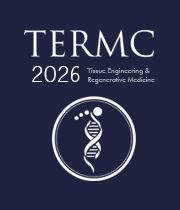Title : Clinical trials of autologous epidermal cell transplantation in hypopigmented burn scar spot treatment
Abstract:
Background and Aim: Postburn permanent depigmentation, which occasionally results from deep partial-thickness and full-thickness burn injuries, remains a serious psychological problem for the affected people. To date, there has not been an available standard treatment for the postburn hypopigmentation disorder. This study aimed to evaluate the effect of non-cultured autologous skin cell suspension for re-pigmentation in hypopigmented burn scar spots.
Methods: In the current clinical trial, five patients with three depigmented sites were enrolled to obtain a partial thickness normo-pigmented skin specimen from the patients’ thigh junction with an area of one-tenth to one-third of the recipient site area. The epidermal cell suspension was prepared by processing the autologous skin specimen. So as to prepare the cell implantation site, fractional CO2 laser was utilized with three different formats: ablative mode, fractional CO2 laser with depth 4, and fractional CO2 laser with depth 5. Later, the necrotic tissue was debrided, and a bed with dew bleeding was created. Finally, the cells were placed in the hypopigmented sites. An experienced dermatologist and patients defined the re-pigmentation score and self-assessment score at regular follow-up visits for up to 1 month after treatment, respectively.
Results: The results showed a re-pigmentation with a mean score of 30 % after 1 month post-transplantation. Although the re-pigmentation score in the patients was significant after cell transplantation (P=0.000), no significant differences were seen in the use of three different formats of fractional CO2 laser. Moreover, the number of situated cells per cm2 positively influenced the re-pigmentation score. Additionally, a higher response to treatment was observed in the depigmented areas on the face and hands.
Conclusion: The current study demonstrated a significant re-pigmentation after autologous epidermal cell transplantation on the depigmented burn scar areas as a promising treatment in postburn patients.
Keywords: Autologous, cell transplantation, hypopigmentation, burn scar.



